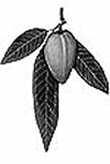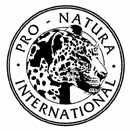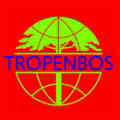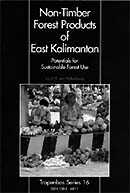International
programs
Conservation
Breeding Specialist Group
Among CBSG activities of
interest to ethnobotanists is a CAMP for
non-timber forest products of wet and dry
deciduous forests of central India held
in Bhopal, Madhya Pradesh. /GJM
 |
| Myristica
malabarica (Myristicaceae),
a tree found in evergreen
and Myristica swamps in
southern India, is
considered vulnerable
because of low seed
viability and germination
rates. |
|
The
Conservation Breeding Specialist
Group (CBSG) is an international
conservation organization
dedicated to protecting
biodiversity. Its mission is to
assist conservation of threatened
animal and plant species through
scientific management of small
populations in wild habitats,
with linkage to captive
populations where needed. The
Group offers advice and services
to government and wildlife
officials throughout the world.
CBSG is part of IUCN, the World
Conservation Union. The Group
comprises over 600 professionals
working in the fields of species
recovery planning, research,
education and related
disciplines. CBSG has developed
a number of processes and tools
to carry out this work. For
example, in their Population and
Habitat Viability Assessment
(PHVA) workshops, biologists and
other professionals are brought
together to assess the extinction
risks for particular endangered
species.
|
One of the tools which
has been developed to assist in this
process is VORTEX, a software package to
model population viability. These
workshops are held in the country in
which the species is found, with the
objective of formulating an action plan
for species recovery and management.
Conservation Assessment Management
Plans (CAMPs) differ from PHVAs in that
they focus on animals or plants of a
specific geographic region or taxonomic
group. The CAMP process, as adapted to
plant taxa, is currently being applied in
a series of workshops on the medicinal
plants of India. Two workshops, organized
by the Foundation for Revitalisation of
Local Health Traditions (FRLHT, see PPH
3:12), have been facilitated by the India
regional network of CBSG.
CBSG produces reports on each of the
workshops that it conducts. The Group
also publishes CBSG News, a quarterly
publication that provides information on
CBSG activities from around the world. To
meet the demand for its services, CBSG
has begun a training program, enabling
scientists from around the world to learn
the processes and tools that are used in
conservation assessment workshops.
‘A Conservation Action
and Management Plan (CAMP) workshop
for 44 selected species of medicinal
plants of southern India was held in
Bangalore, India from 12 – 14
February 1996. The workshop was the
second in a series which ultimately
will assess approximately 300
priority species listed by the
Foundation for Revitalisation of
Local Health Traditions (FRLHT),
which hosted both CAMP I and CAMP II.
In CAMP I, 36 species were assessed,
using the revised IUCN Categories of
Threat. Of these species, four were
classified as “Data
Deficient” and were then
included in the list for CAMP II. The
other 40 species were selected on the
basis of two criteria, i.e. inclusion
in the Indian Red Data Book for
Plants and also their commercial
demand. Some species were included
because of threat to them perceived
by some botanists.’
Molur,
S. and S. Walker, editors. 1996. Report
on Conservation Assessment and
Management Plan (CAMP II) for
Selected Species of Medicinal Plants
of Southern India, 12 – 14
February. Peelamedu, Zoo
Outreach Organization and
Conservation Breeding Specialist
Group.
CONTACT
Philip Miller, Program
Officer, Conservation
Breeding Specialist Group, 12101
Johnny Cake
Ridge Road, Apple Valley,
Minnesota 55124-
8151, USA;
Tel. +1.612.4319325,
Fax +1.612.4322757,
E-mail office@cbsg.org
Website http://www.cbsg.org
BACK
The Nature Conservancy
The TNC
Website offers an interesting database
entitled Selected Rare Plants of Latin
America and the Caribbean, which provides
information on the taxonomy, global
conservation status and national
distribution of nearly 2,000 species.
These were selected from over 11,000
vascular plant taxa assessed by TNC
botanists, and include many useful
plants. Just select the
‘conservation science’ option
from the TNC home page. /GJM
 |
The Nature
Conservancy (TNC) emerged in 1951
from a professional association
of ecologists seeking to turn
their knowledge of nature into
positive action for conservation.
Working initially in the United
States to protect ecologically
significant land, it has
subsequently expanded to Latin
America, the Caribbean and the
Pacific. |
The
Conservancy’s mission is to preserve
plants, animals, and natural communities
that represent the diversity of life by
protecting the land and water they need
to survive. Protection and conservation
are based on land purchase, building
local constituencies, working with land
managers, and developing biodiversity
inventory programs.
These initiatives
include the Heritage Programs in the
United States and Conservation Data
Centers elsewhere. The botany program of
the Conservancy provides plant
information on biodiversity conservation
to TNC staff, government agencies and
others. It maintains a database that aims
to determine the conservation status of
plants in the Western Hemisphere. The
current emphasis is on vascular plant
species of the United States and Canada
and woody plant species of Latin America
and the Caribbean.TNC has initiated
several economic plant projects in Latin
America. The purpose of these projects is
to study the distribution and economic
significance of wild sources of economic
plants and their relatives in protected
areas.
A field inventory of
plant resources in Cerro Corá National
Park, in northeast Paraguay, was
completed in 1997. This was a
collaborative project undertaken with the
National University of Asunción and the
Conservation Data Center (CDC) of
Paraguay’s Department of National
Parks and Wildlife. The project began
with an ethnobotanical study in four
indigenous and two campesino communities
living near the Park. The purpose of the
project was to assess the value of the
Park for in situ conservation of species
that are economically important to local
communities. A workshop was conducted
from 30 June to 4 July 1997 to present
project results to members of the
communities and park managers, and to
develop a management plan and
conservation strategy for the Park flora.
‘Thursday
(3 July 1997)
AM: The first working group offered a
summary. Using the Park’s zoning
map, prepared by a consulting firm,
as a framework and overlaying the
vegetation map and localities of
populations of crop wild relatives,
rare plants, and endangered plant
species discovered in this project,
the group made suggestions for each
management zone in the Park ... The
second discussion group selected 6
plants for cultivation of 27 that had
been suggested by the participants:
Yerba mate (Ilex paraguariensis),
chosen as the most important crop by
every local community; Arnica del
campo (Viguiera linearifolia),
the most desired medicinal plant,
Trebol (Amburana cearensis),
for its highly priced wood and its
status as an endangered species;
Yvyra pyta (Peltophorum dubium),
a fast growing species popular for
timber and firewood, Guavira mi (Campomanensia
adamantium and C. pubescens),
cerrado species producing fruit
popular among local residents; and
Rosa del campo (Gomphrena
macrocephala), for its
horticultural potential.’
Keel, S. n.d. Notes
on the Workshop on Conservation and
Management of the Flora of Cerro
Corá National Park. Unpublished
report on trip to Paraguay, 20 June -
7 July 1997.
CONTACT
Shirley Keel,
The Nature Conservancy, International
Headquarters,
1815 North Lynn Street, Arlington,
Virginia 22209, USA;
Tel. +1.703.841.2714, Fax
+1.703.841.2722,
E-mail skeel@tnc.org
Website http://www.tnc.org/
BACK
World Conservation
Monitoring Centre
The WCMC
Website offers the 1997 IUCN Red List of
Threatened Plants as a searchable
database. Upon being simultaneously
launched in book form in Australia, South
Africa, United Kingdom and the USA, this
Red List attracted front page press
coverage around the world. /GJM
The World Conservation
Monitoring Centre (WCMC) was established
in 1988, and has charitable status. It is
managed as a joint venture between IUCN,
UNEP (United Nations Environment
Programme) and WWF. Its mission is to
provide information on the status,
security, management and utilization of
the world’s biological diversity to
support conservation and sustainable
development. Within the organisation, the
Threatened Plants Unit (TPU), working in
collaboration with the IUCN Species
Survival Commission (SSC), gathers,
analyses and disseminates information on
plants threatened at the national and
global scale. The plant database holds
taxonomic, distribution and conservation
data on over 80,000 species. Recently the
Unit has been focusing on wild relatives
of crop plants, tropical timber species
and plants growing in protected areas and
botanic gardens. WCMC’s expertise
also includes information management on
protected areas, species and habitats of
conservation concern and international
conservation agreements and programmes.
WCMC produces a wide range of
publications, and is expanding its
information services by using the
Internet.
‘A total of 605 Tropical
Montane Cloud Forest Sites in 41
countries have been identified to
date … The highest concentration
is found in Latin America, where 280
sites (46%) are found in only 12
countries, the majority in Venezuela,
Mexico, Ecuador and Colombia. In
Southeast Asia, 228 sites have been
identified in 14 countries,
principally in Indonesia and Malaysia
and to a lesser extent in Sri Lanka,
Philippines and Papua New Guinea. In
Africa, 97 sites have been recorded
in 21 countries, with many cloud
forests on relatively isolated
mountains which are scattered across
the continent.
Details of the size of
particular cloud forest sites have
been difficult to obtain, except
where the information has been
supplied by local experts. In any
case, the actual extent of cloud
forest itself as distinct from the
surrounding or adjoining forest type
is very difficult to determine, even
on the ground.
An initial assessment of the
values of cloud forests shows that
the majority of areas are
exceptionally important habitats for
endemic and other threatened species
of flora and fauna, including many
important tree species and plants
such as tree ferns and orchids. Large
numbers of bird species and mammals
such as the spectacled bear
Tremarctos ornatus and howler monkeys
Alouatta spp. are dependent
on cloud forest habitat for their
survival. In addition, these forests
have a high socio-economic value to
local populations principally as a
source of fuelwood, building
materials and food amongst others,
but also on a larger scale for
watershed production and climate
regulation.’
Aldrich, M., C.
Billington, M. Edwards and R.
Laidlaw. 1997. Tropical montane
cloud forests: an urgent priority for
conservation. WCMC Biodiversity
Bulletin 2.
CONTACT
Harriet Gillett,
World Conservation Monitoring Centre,
219 Huntingdon Road, Cambridge CB3
0DL, UK;
Tel. +44.1223.277314, Fax
+44.1223.277136,
E-mail info@wcmc.org.uk
Website http://www.wcmc.org.uk
BACK
Pro-Natura International
From its
base in Paris, Pro-Natura International
promotes applied research in more than
two dozen countries. Particularly
innovative and well publicized are its
collaborative efforts to discover novel
secondary compounds in the tropical
forest canopy in Africa and South
America. /GJM
 |
The mission of
Pro-Natura International is to
‘save the tropical forests
for the people with the
people’. A non-profit
organization, it functions as a
network that exchanges hands-on
experience between NGOs.
Pro-Natura focuses on the needs
of people who depend on tropical
forests for their livelihood,
providing advice on the design
and management of grass-roots
projects. |
It is
specialized in community-led sustainable
development programs in the tropics.
Pro-Natura sponsors projects in
twenty-five countries that focus on
agroforestry and non-timber forest
products, sustainable logging and local
timber processing, biodiversity
prospecting and biomass energy. The
services offered to NGOs include:
- technical and
managerial advice on the
design and running of
projects;
- financial help
for projects by finding
sponsors
- help in
finding experienced staff for
projects;
- advice about
international outlets for
products from the projects;
- management
consultancy for setting up
co-operatives and local
processing;
- organization
of visits to other projects.
Priority is given to
highly endangered zones and areas of high
biodiversity and endemism. A database of
NGOs, expertise, projects and sponsors is
being built up to facilitate networking.
‘The
Pro-Natura French Guyana mission of
1996, which took place during the
last quarter of 1996 in collaboration
with the Office National des Forêts,
Opération Canopée and Silvolab, was
an operation of a scientific nature
intended to widen our knowledge of
the forest canopy. The tree-top
platform and its associated airship
were used by a team of 33
researchers. A trial testing was made
of Professor Francis Hallé’s
thesis, according to which the
secondary metabolites (natural
molecules potentially usable in
pharmaceutical and agricultural
research) would be more varied and
more abundant in the canopy than at
lower and ground levels …
A new operation
is due to take place in Gabon in the
area of the Monts de Cristal, the
summit of the African forests in
matters of biodiversity.’
Anonymous.1998.Pro-Natura
International Newsletter.Spring
CONTACT
Guy F. Reinaud, President,
Pro-Natura International,
51 rue d’Anjou, 75008 Paris,
France;
Tel. +33.1.49241498, Fax
+33.1.49241566,
E-mail pro10@calva.net
Website http://www.columbia.edu/~bpc1/pronatura/
BACK
Tropenbos
Foundation
The
Tropenbos Foundation hosts the
Coordinating Unit of the European
Tropical Forest Research Network (ETFRN),
with which it shares a Website. / GJM
 |
The
Tropenbos Foundation was founded
in July 1988 to continue and
expand the international
Tropenbos Programme, set up by
the Netherlands government in
1986. Its main objectives are
to:(1) contribute effectively to
the conservation and wise use of
tropical rain forests by
generating knowledge and
developing methodologies; and (2)
involve local research
institutions and strengthen
research capacity in tropical
rain forest countries. |
Based on
the needs of policy makers and forest
users, the Tropenbos Foundation
formulates, coordinates and finances
objective oriented research programs.In
close cooperation with research
institutions and governments, Tropenbos
has established permanent research sites
in Cameroon, Colombia, Côte
d’Ivoire, Guyana and Indonesia.
Researchers address issues such as
land-use planning, biodiversity
conservation in protected areas,
sustainable forest management, and
criteria and indicators for sustainable
forest management.
In addition to work at
long-term research sites, special studies
have been carried out in Ecuador and
Gabon. Tropenbos develops research
strategies for specific themes such as
biological diversity, non-timber forest
products and indigenous forest
management. Extension and training
components are important elements in the
international and national Tropenbos
Programmes.
| Tropenbos
provides information on its
activities through the Tropenbos
Newsletter, which is issued 3
times a year, and through its
homepage on the Internet. The
results of its research
activities are published in the
Tropenbos Series or as Tropenbos
Documents. Country-specific
results are disseminated in local
Tropenbos Series or technical
reports. The latest publication
in the Tropenbos Series is Number
16, J.L.C.H. van
Valkenburg’s Non-timber
Forest Products of East
Kalimantan. Potentials for
Sustainable Forest Use, which was
published in 1997. Number 14 of
Tropenbos Documents is a 31-page
booklet on the Tropenbos
experience in developing methods
for research on non-timber forest
products, produced in 1998. |
 |
‘An
agroforestry system could be created
with a canopy of large (fruit) trees
(100 ha -1) and a second layer of
medium-sized, shade-tolerant fruit
trees (100 ha -1). The core of 200
trees per hectare leaves ample space
for additional plants. For the canopy
a selection can be made of: illipe
species (e.g. Shorea
macrophylla, S. pinanga), Artocarpus
integer, Durio zibethinus,
various Mangifera species
and Parkia speciosa.
Suitable shade-tolerant fruit trees
are: Baccaurea spp., Dimocarpus
longan, Durio kutejensis, Lansium
domesticum and Nephelium
lappaceum. The balance of species
will vary according to market
possibilities and ecological and
social constraints.The shade-tolerant
fruit trees start producing after
five years. After ten years the
‘canopy’ trees will have
overtopped the small fruit trees, and
cempedak and durian trees start
producing. Finally, after twenty
years, a first illipe harvest can be
expected.The problem with this
proposed man-made forest is of course
whether people are willing to invest
in such a long rotation system. The
system reaches its highest production
at a time when the person who has
planted the trees will probably have
died.’
van Valkenburg,
J.L.C.H. 1997. Non-timber Forest
Products of East Kalimantan.
Potentials for Sustainable Forest Use.
Tropenbos Series 16.
CONTACT
Joanna Boddens Hosang, Head of
Communications Unit,
The Tropenbos Foundation,
PO Box 232, NL-6700 AE Wageningen,
The Netherlands;
Tel. +31.317.426262, Fax
+31.317.423024,
E-mail jbh@iac.agro.nl or tropenbos@iac.agro.nl
Website http://www.tropenbos.nl
To order
books in the Tropenbos series:
Wim
Backhuys, Backhuys Publishers - The
Netherlands,
PO Box 321, 2300 AH, Leiden, The
Nethelands;
Tel. +31.71.5170208, Fax
+31.71.5171856,
E-mail backhuys@euronet.nl
Website http://come.to/backhuys
BACK
Plant
Resources of South EastAsia
Volume 11
of the PROSEA Handbook on useful plants
of Southeast Asia was published in 1997.
It contains a total of 78 papers that
describe 91 major species and some 120
minor species of auxiliary plants used in
agriculture and forestry. /GJM
PROSEA - Plant
Resources of South East Asia - is an
international program that collects and
evaluates knowledge on the useful plants
of the region. The project is committed
to the conservation of biodiversity and
rural development through sustainable
land-use systems. PROSEA has four
objectives: (1) to document and make
available the existing wealth of
information on the plant resources of
Southeast Asia for education, extension
work, research and industry; (2) to
produce a computerized databank on the
plant resources of Southeast Asia; and
(3) to publish the results in the form of
an illustrated, multi-volume handbook in
English.
Volumes of the Handbook
already produced include: Pulses;
Edible Fruits and Nuts; Dye and
Tannin-producing Plants; Forages; Timber
Trees: Major Commercial Timbers; Timber
Trees: Minor commercial Timbers; Timber
Trees: Lesser-known Timbers; Rattans;
Bamboos; Vegetables; Plants Yielding
Non-seed Carbohydrates; Cereals; and
Auxiliary Plants. Future volumes
will focus on medicinal and poisonous
plants (in three parts), spices,
vegetable oils and fats, lower plants,
stimulants, fibers, exudates, essential
oils and ornamentals (in two parts).
These books and the databank contain
information on uses, distribution,
botany, ecology, agronomy, diseases,
harvesting, genetic resources, breeding
and literature for the various
species.PROSEA has a Network Office in
Bogor, Indonesia that coordinates the
efforts of six Country Offices in
Southeast Asia, and a Publication Office
in Wageningen, the Netherlands.
‘For
centuries people of South-East Asia
have been using vegetable dyes to
colour food. The rich flora of this
region presents many sources of
pigments to choose from. The use of
plant pigments for colouring food,
especially for traditional meals, is
still widespread in South-East Asia,
although the number of plant pigments
used is quite limited. It is common
practice to extract pigments directly
from fresh materials, for instance
yellow from the tubers of
Curcuma longa L., green from the
leaves of Pandanus
amaryllifolius Roxb., Dracaena
angustifolia Roxb. and Sauropus
androgynus (L.) Merr. ... Besides
the colour, people often also
appreciate the typical flavour and
taste given to the food by the plant
product.’
Lemmens, R.H.M.J.
and N. Wulijarni-Soetjipto, editors.
1991. Dye and Tannin-producing
Plants. Volume 3. Plant
Resources of South-East Asia.
Wageningen, Pudoc Scientific
Publishers.
CONTACT
Junus Kartasubrata, Head, PROSEA
Network Office Southeast Asia,
c/o Research and Development Centre
for Biology (RDCB-LIPI),
Jalan Ir. H. Juand 22, PO Box 234,
Bogor 16122, Indonesia;
Tel. +62.251.370934 or 322859, Fax
+62.251.370934,
E-mail junus@indo.net.id
Jan S.
Siemonsma, Head, Prosea Publication
Office,
c/o Wageningen Agricultural
University (WAU), Haarweg 333,
PO Box 341, 6700 AH Wageningen, The
Netherlands;
Tel. +31.317.484587, Fax
+31.317.482206,
E-mail elly.fokkema@pros.agro.wau.nl
Website http://www.bib.wau.nl/prosea/home.html
BACK
|